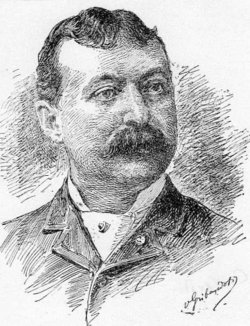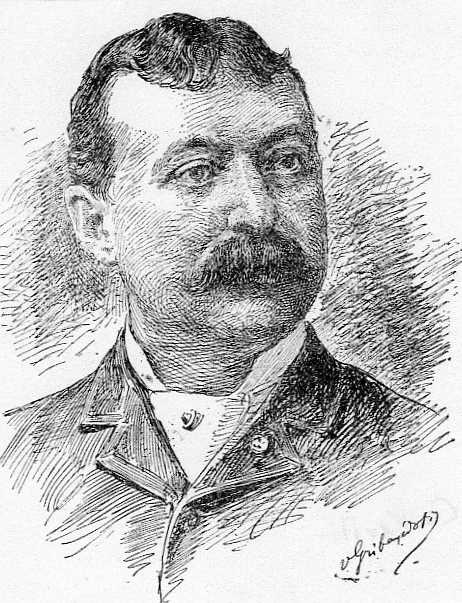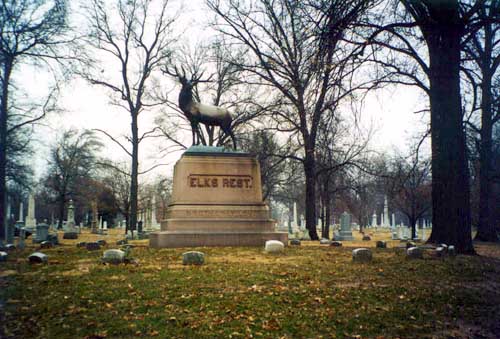American Journalist. He was a journalist who served in the American Civil War as a drummer boy when he was just fifteen years old; he was the son of Brigadier General Joseph Randolph Cockerill. Three years after the war, he was the editor of the "Dayton Daily Ledger" in 1868. In 1872, he was the editor of the "Cincinnati Enquirer" and correspondent in the Russo-Turkish War in 1876. He was the editor of the "Baltimore Gazette" in 1878. He became the editor of the newspaper, the "St. Louis Post-Dispatch," which was owned by Joseph Pulitzer. In one editorial, he criticized the conduct of James Overton Broadhead of the law firm of Broadhead, Slayback, and Haeussler. Nine years after the incident, Broadhead was selected to be a candidate for Congress by the same interests that the "Post-Dispatch" had long fought. The affair escalated into a heated personal feud between Cockerill and Alonzo Slayback, a partner in the law firm. On October 5, 1882, Slayback and a friend, William Clopton, went to the "Post-Dispatch" and entered Cockerill's office to demand an apology. During the ensuing scuffle, when Slayback attempted to slap Cockerill in the face, Cockerill shot and killed Slayback. Cockerill's supporters claimed he shot in self-defense, but Clopton insisted that Slayback was unarmed. Years later, it was learned Slayback had a gun, which was removed from his pocket by his colleague. The famed lawyer Charles P. Johnson defended Cockerill, and the jury's verdict was a "justifiable homicide committed in self-defense." Cockerill left St. Louis under a dark cloud, but at the request of Pulitzer, he resumed his newspaper career at the Pulitzer's "New York World" as the editor and later at the "New York Herald." One of his last assignments was to the Far East as special editor "New York Advertiser" in 1891. His letters from Japan were among the finest examples of English composition. The Emperor of Japan was so pleased with his documentation of the Japanese culture that he conferred on him "The Order of the Sacred Treasure." At the time of this honor, only two other men, other than Japanese noblemen, had ever received this mark of distinction. According to a Chicago obituary, while on assignment in Egypt, he was in a Cairo hotel barber shop when he suddenly had an attack and died within a couple of hours. He was the five-term President of the New York City Press Club. He had been a Democrat until the administration of President Harrison when he became a Republican and continued to be devoted to that party during his life. In 1965, Homer King published his book, "Pulitzer's Prize Editor: A Biography of John A. Cockerill, 1845-1896."
American Journalist. He was a journalist who served in the American Civil War as a drummer boy when he was just fifteen years old; he was the son of Brigadier General Joseph Randolph Cockerill. Three years after the war, he was the editor of the "Dayton Daily Ledger" in 1868. In 1872, he was the editor of the "Cincinnati Enquirer" and correspondent in the Russo-Turkish War in 1876. He was the editor of the "Baltimore Gazette" in 1878. He became the editor of the newspaper, the "St. Louis Post-Dispatch," which was owned by Joseph Pulitzer. In one editorial, he criticized the conduct of James Overton Broadhead of the law firm of Broadhead, Slayback, and Haeussler. Nine years after the incident, Broadhead was selected to be a candidate for Congress by the same interests that the "Post-Dispatch" had long fought. The affair escalated into a heated personal feud between Cockerill and Alonzo Slayback, a partner in the law firm. On October 5, 1882, Slayback and a friend, William Clopton, went to the "Post-Dispatch" and entered Cockerill's office to demand an apology. During the ensuing scuffle, when Slayback attempted to slap Cockerill in the face, Cockerill shot and killed Slayback. Cockerill's supporters claimed he shot in self-defense, but Clopton insisted that Slayback was unarmed. Years later, it was learned Slayback had a gun, which was removed from his pocket by his colleague. The famed lawyer Charles P. Johnson defended Cockerill, and the jury's verdict was a "justifiable homicide committed in self-defense." Cockerill left St. Louis under a dark cloud, but at the request of Pulitzer, he resumed his newspaper career at the Pulitzer's "New York World" as the editor and later at the "New York Herald." One of his last assignments was to the Far East as special editor "New York Advertiser" in 1891. His letters from Japan were among the finest examples of English composition. The Emperor of Japan was so pleased with his documentation of the Japanese culture that he conferred on him "The Order of the Sacred Treasure." At the time of this honor, only two other men, other than Japanese noblemen, had ever received this mark of distinction. According to a Chicago obituary, while on assignment in Egypt, he was in a Cairo hotel barber shop when he suddenly had an attack and died within a couple of hours. He was the five-term President of the New York City Press Club. He had been a Democrat until the administration of President Harrison when he became a Republican and continued to be devoted to that party during his life. In 1965, Homer King published his book, "Pulitzer's Prize Editor: A Biography of John A. Cockerill, 1845-1896."
Bio by: Linda Davis
Family Members
Advertisement
See more Cockerill memorials in:
Advertisement














